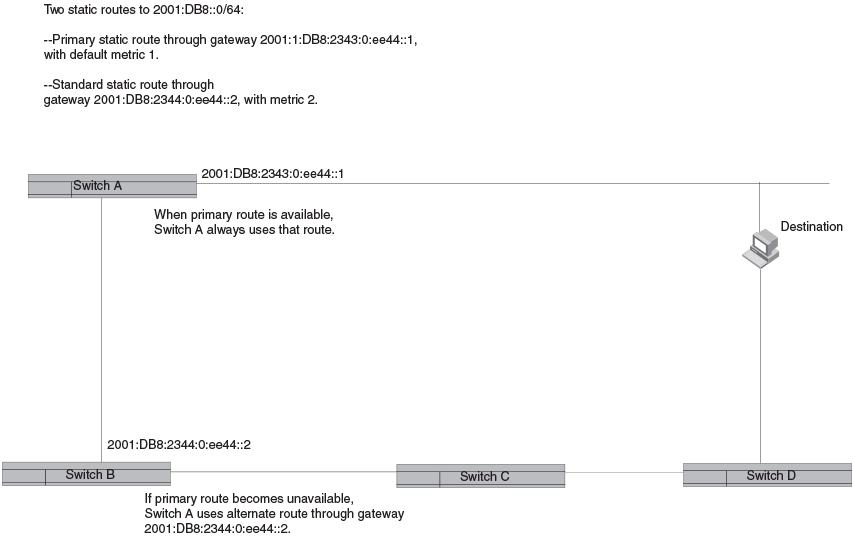Configure IPv6 Static Routes for Load Sharing and Redundancy
You can configure multiple static routes to the same destination as load sharing or backup routes.
About this task
If you configure more than one static route to the same destination with different next-hop gateways but the same metrics, the router load balances among the routes using a basic round-robin method.
If you configure multiple static IP routes to the same destination with different next-hop gateways and different metrics, the router always uses the route with the lowest metric. If this route becomes unavailable, the router fails over to the static route with the next-lowest metric.
Two static routes to same
destination


Note
You can also use administrative distance to set route priority. Assign the static route a lower administrative distance than other types of routes, unless you want the other route types to be preferred over the static route.
